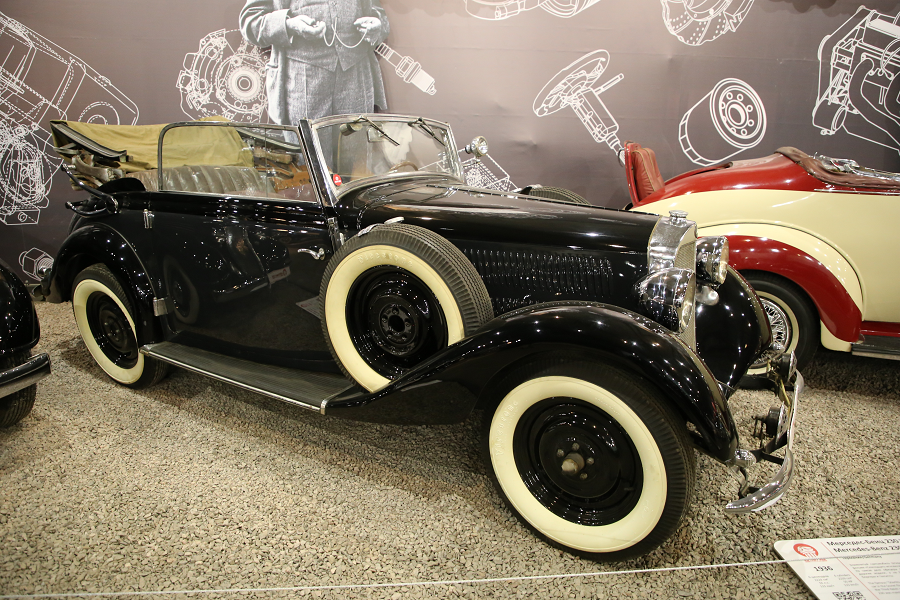Mercedes-Benz 230 (W143) from 1937 with 55 HP. 6 cylinders, 2.2 L, 115 km/h in Moscow
The Mercedes-Benz Typ 230 n was introduced by Mercedes-Benz in 1937 as a successor to the Typ 230 (W 21).
It was one of several models over the space of nearly eight decades to be sold with a name along the lines “Mercedes-Benz 230”, and is therefore in retrospect more normally named according to its internal works designation as the Mercedes-Benz W 143.
Mercedes-Benz Typ 230 n (1937)
The car was initially built with the same 2,700 mm (110 in) wheelbase as the Typ 200 (W 21). It also inherited the sophisticated all-round independent suspension system originally introduced with the manufacturer’s smaller Mercedes-Benz W15 model. There was no full width axle at the front, the wheels being suspended from two transverse leaf springs. At the back there were two half swing-axles.
The body was further lengthened, however, with standard-bodied cars now coming in at 4,400 mm (170 in), while the width had increased to 1,370 mm (54 in). The 6-cylinder 2,229 cc unit was the one that had first been seen a year earlier as part of the 1936 upgrade on the W 21 model, but now it was matched up to a more conventional four-speed manual transmission. The top ratio on the 2,229 cc version of the earlier model had been in effect an overdrive. Claimed top speed was 116 km/h (72 mph).
At launch the base chassis version of the car came with a recommended retail price of 4,200 Marks. Customers wishing to buy a W 143 with one of the Mercedes standard bodies could choose between a two- or four-door “Limousine” (saloon/sedan) retailing respectively at 4,990 Marks or 5,270 Marks, or one of several cabriolet or roadster models, mostly with only two seats and costing more. The grill was raked backwards and, on the standard car, had no bar for the mounting of lights, all of which helped to enhance the sleek appearance of the front.
The result of putting a 4,400 mm (170 in) car body on the old 2,700 mm (110 in) was one or two very long overhangs: in the case of the 1937 W143 the overhang was concentrated at the back. Whether because the excessive rear overhang looked rather odd, or for other reasons, the original W 143 failed to gain market acceptance, and although the short-wheelbase cars continued to be offered for sale until the end of 1937, well before that the model had effectively been relaunched with the longer 3,050 mm (120 in) wheelbase that had already been offered on special long-wheelbase version of the Mercedes Typ 200 (W 21) for several years.













